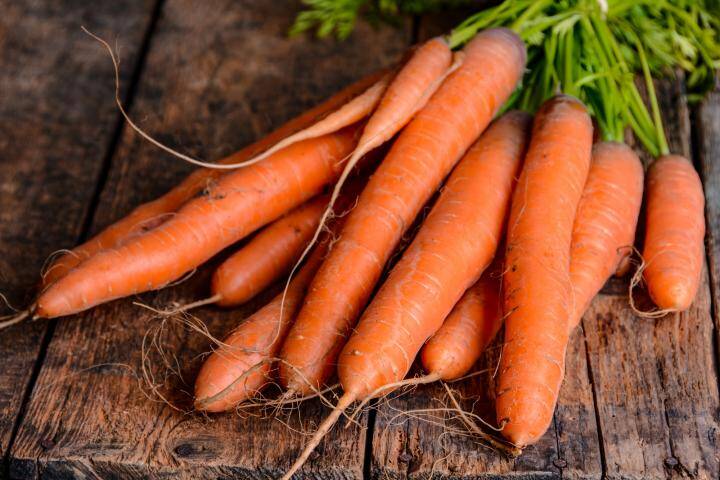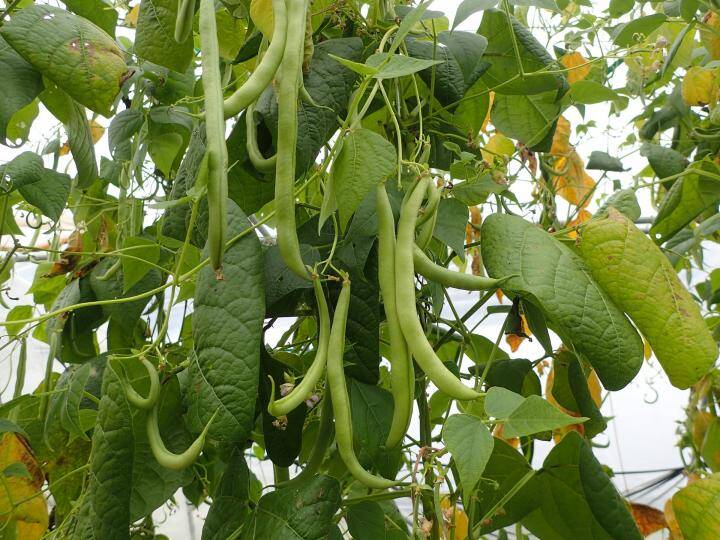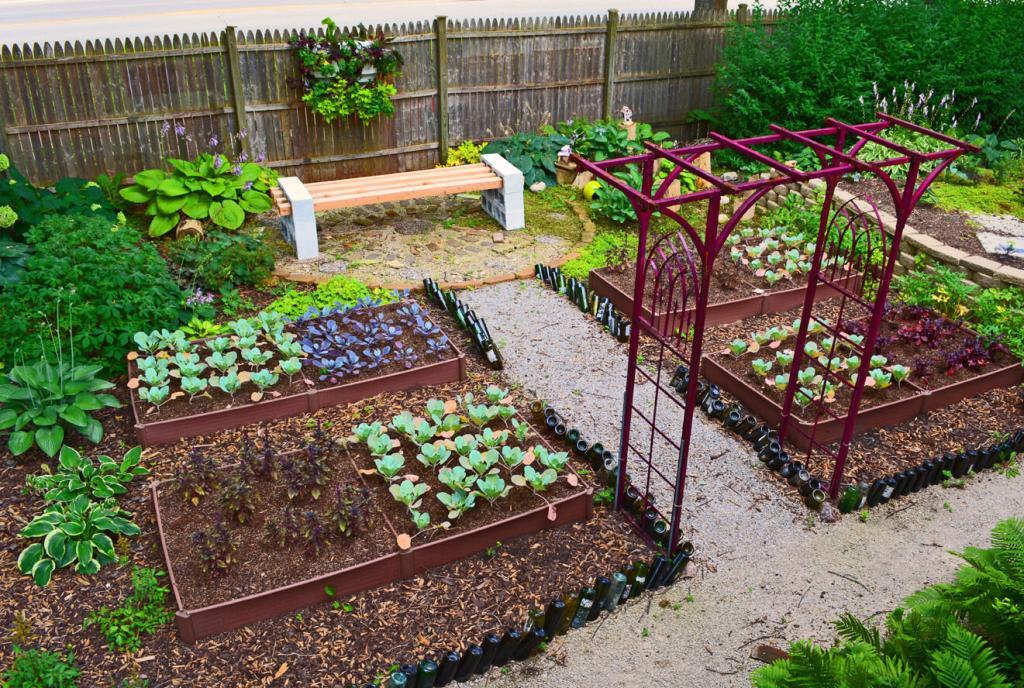How to Organize Vegetable Gardens 4 Tips
I will try to explain how to organize a vegetable gardens with the plants you want to grow in your own garden, from super fresh lettuce to juicy tomatoes.
Table of Contents
Garden arrangement should be in a plan that gets more sun than garden landscaping. We should make sure that our vegetables see the sun, that the vegetables you grow are not overwatered, and that we cover the soil with compost.
Garden landscaping, how to make garden landscaping we decide on garden watering. How to make a garden? It is useful to water the garden abundantly without turning the soil upside down. What to plant in the garden, gardening tricks are with you.

1.Vegetable Garden Site Selection
Before we start, let’s think about the location of our vegetable garden. Growing vegetables in small garden, garden planting and layout, vegetable garden for beginners, how to plant vegetables.
- Where do you get the most sun? Ideally, choose the sunniest part of your garden. Most vegetables need 6 to 8 hours of direct sun a day! Note that the south, east and west sides of your house will get more sun than the north.
- How far away is the water? Make sure you have easy access to a hose or water source!
- Ideally, somewhere you can see it from your door or window, so the vegetable garden is easier to water and keep track of!
- Do you have a nice clearing? If there are many bushes or trees nearby, it may not be suitable for your garden for sunlight as well as nutrients and moisture.
- How big is your garden? Better to start small! If you are new to vegetable gardening, a 10′ x 10′ garden (100 square meters) is enough to get started.
2.Which vegetables do you want to grow in the vegetable garden?
For beginners, it is very important to choose vegetables that are easy to grow. Take seasonal factors into consideration. The following 10 plants are easy to grow in a hobby vegetable garden. Vegetables that grow in the garden, vegetable garden planning, what is needed for vegetable garden arrangement are all in this article.
How to Grow Carrots in Vegetable Garden?

Carrots are root vegetables that can grow in many climates and are also long-lived. It prefers to grow in spring and fall, during the cooler periods of the growing season. Carrots need a loose, light and airy soil. Most need to add sand to the soil.
October
How to plant a garden? How to plant a garden?
- Sow the carrot seeds alternately in the vegetable garden, 3-4 cm apart from each other.
- Keep the soil moist by watering frequently. The soil cannot prevent the small carrot seeds from germinating.
- Carrots are sometimes slow to sprout. It can take 2 to 3 weeks before they show any signs of life, so don’t panic if your carrots don’t appear right away!
- Carrots grow best in full sunlight, but can tolerate moderate shade. Also, carrots grown in the shade will not be as robust as those living in the sun.
Breeding Period;
- After planting, mulch lightly to conserve moisture, accelerate germination and prevent the sun from hitting the roots directly.
- Water the vegetable garden regularly.
- Carefully remove weeds, but be careful not to disturb the carrot roots while doing so.
- Fertilize 5-6 weeks after sowing.
Harvest Period;
- Carrots should be ripe and ready for harvest in about 2-4 months or when they reach at least half a centimeter in diameter. You can harvest when the desired maturity is reached.
- If you grow carrots in spring and summer, harvest before daily temperatures get too hot, as the heat can cause the carrot roots to become fibrous.
- Carrots taste better after a few frosts. (A frost encourages the plant to start storing energy – sugar – in the root for later use.)
How to Grow Green Beans?

There are many different types of beans, but “broad beans” are one of the easiest vegetables to grow. Bush beans or pole beans are more productive, but seat beans are easier to grow. Beans are a vegetable garden staple because they are easy to grow in limited spaces and are versatile in the kitchen.
Vegetable Garden Planting Period ;
- The pole bean will grow to 30-60 cm tall to form a vine. The seat bean spreads up to 2 meters, but does not require support.
- Normal, moderately rich soil is good for beans. Beans in the vegetable garden do not need additional fertilizer as they fix their own nitrogen.
- Seeds can be sown outdoors at any time after the last spring frosts.
- Plant all bean seeds 1 to 2 cm deep in normal soil and a little deeper for harder soils. Cover the soil to keep it warm if necessary.
Vegetable Garden Growing Period;
- Mulch soil to retain moisture; make sure it is well drained. Beans have shallow roots, so mulch keeps them cool.
- Water regularly. If you don’t water the beans well, the flowering will stop.
- Avoid nitrogen fertilizers or you will get lush vegetation and few beans.
- Carefully remove weeds at the bottom of the vegetable garden.
Vegetable Garden Harvest Period;
- Growing beans should be harvested before the seeds inside ripen.
- Try to weed out the hard ones, which are usually as thick as a pencil.
- Do not break the bean branches, cut them off at the stem.
- Pick green beans every day; the more you pick, the more beans will grow.
- Store the beans in the refrigerator in a moisture-proof and airtight container. Beans harden over time, even when stored properly.
- Beans can be kept fresh in the vegetable garden for about 4 days.
- Beans can be stored frozen or canned or pickled.
How to Grow Lettuce in the Vegetable Garden ?

Home-grown lettuce is far superior to store-bought alternatives, both in taste and vitamin A content! Here’s how to plant, grow and harvest lettuce in the vegetable garden. Lettuce is a cool season crop that grows well in spring and falls in most regions. Lettuce seedlings are resistant to even a light frost.
Vegetable Garden Planting Period;
Before sowing your lettuce seeds, make sure the soil is ready. It should be loose and drain well, so it is moist without being soggy. To keep the soil fertile, feed it with fertilized organic matter about a week before seeding or transplanting seedlings.
Since the seed is very small, a well-treated seedbed is very important. Stones and large pieces of dirt prevent germination.
- Direct sowing is recommended as soon as the soil is workable. Plant seeds should be sown half a centimeter deep.
- If you want an earlier crop, you can start seeds indoors 4 to 6 weeks before your last spring frost date. Harden the seedlings for about a week and transplant them outdoors between 2 weeks before and 2 weeks after the last spring frost.
- The seed can be sown in the vegetable garden in a single row or broadcast for wide row planting. When broadcasting, you need to “thin” for the correct spacing.
- Water well during transplanting.
- To control aphids, you might consider planting onions or garlic between the lettuce. They act as a “barrier plant” for lettuce.
Vegetable Garden Cultivation period;
- Fertilize 3 weeks after planting. Lettuce prefers soil with a high organic matter content, plenty of compost and a constant supply of nitrogen for fast growth.
- Make sure the soil stays moist and drains well.
- Lettuce will tell you when it needs water. Just look at this. If the leaves are wilting, always water them – even in the heat of the day – to cool them down and slow down the rate of transpiration.
- Organic mulch will help retain moisture, suppress weeds and keep the soil temperature cool in the warmer months.
- Plant lettuce in the shade of taller plants such as tomatoes or sweet corn.
- You should be able to sow additional lettuce seeds every two weeks for a continuous harvest throughout the growing season.
- To plant an autumn crop, create cool soils in the vegetable garden in August by moistening the soil and covering it with a bale of straw. After a week, the soil under the bale will be about 6°C cooler than the rest. Sow lettuce seeds every few weeks.
How to Grow Tomatoes in a Vegetable Garden ?

Tomatoes are the best backyard crop and growing them is easier than you think. These tomato growing tips will help you keep your tastiest plants.
- Tomatoes are a warm season crop, sowing seeds in greenhouses causes rapid germination. When the seeds germinate, you can remove them from the greenhouse and plant them outside.
- Tomatoes can be grown in soils with a wide range of textures, from light sandy soils to heavy clay soils. Sandy soils are preferred if early harvest is desired.
- The main factor affecting all stages of the plant’s development is temperature: vegetative growth, flowering, fruiting and fruit ripening. Growth requires temperatures between 10°C and 30°C.
- Light intensity is one of the main factors affecting the amounts of sugars produced in the leaves during photosynthesis, which in turn affects the number of fruits the plant can support and the total yield.
- Tomato plants are highly resistant to moderate drought. However, proper irrigation is essential to ensure high yield and quality. The water requirement of tomatoes grown outdoors varies between 4000 – 6000 m³/ha.
- Greenhouses need 10,000 m3/ha of water. 70% or more of the root system is in the upper 20 cm of the soil. Therefore, a drip irrigation system is recommended.
- Tie the growing branches together with string or sticks to support them. Prune excess branches and leaves.
- In the vegetable garden, pick the blushing tomatoes immediately, without letting them sit on the branch.
Other Plants You Can Grow in the Vegetable Garden .
Cucumber, radish, bell pepper, eggplant, zucchini, zucchini, parsley, okra, araka…. You can include every vegetable you like to use in your kitchen in your hobby garden.Cucumber, radish, bell pepper, eggplant, zucchini, zucchini, parsley, okra, araka…. You can include every vegetable you like to use in your kitchen in your hobby garden.
In the above examples of how to grow vegetables, we see how important watering is in the vegetable garden. With healthy watering, you can get healthy crops.
If you have a well for hobby gardens, you can use a water pump. At the same time, if you need to supply water from the minus code, you may need an irrigation pump with suction up to 6 meters.
3.Identify Vegetable Garden Specialty Vegetable Beds
Growing in dedicated beds reduces soil compaction, helps simplify crop rotation, and weeding and protecting your crop is a breeze. A simple bed system in your garden makes it easy to plan, grow and harvest your plants. Below are examples of vegetable gardens where the garden vegetable planting scheme is clearly visible.

- The beds can be laid at soil level or raised and should be no wider than 5-10 cm to allow easy access to the center without stepping on the soil.
- The length of your beds in the vegetable garden should take into account how far you are willing to walk to reach the other side.
- The narrow bed allows you to grow plants in blocks rather than rows, which helps suppress weeds and maximizes the number of plants you can grow in that space.
- Use access paths at least 2 meters wide between beds to allow easy access for weeding and harvesting.
- If the vegetable garden can be easily mowed, paths can be made of grass.
Continue for answers to all questions such as how to organize a garden, how to plant a garden, how to make a productive garden, how to organize a vegetable garden.
4.Placing Vegetables in Beds in the Vegetable Garden
- Tender Facilities
Grow tender plants like tomatoes and peppers in the warmest, sunniest parts of the plot, so include them in your plan.
- Spreading plants
Next, consider plants that need a lot of space, such as zucchini. Add them at the edges of the bed so they don’t smother neighboring plants.
- Climbing Plants
Climbers that grow tall, such as peas and pole beans, should be placed where they will not wilt the lesser-growing vegetables.
Especially in hot climates, you may want to take advantage of the potential shade to grow cool-season crops such as lettuce and spinach.

- Quick Access Plants
Plants that are harvested regularly and do not need to be included in the crop rotation, such as herbs and salad leaves, should be placed in the beds closest to the kitchen.
- Pollination and Complementary Planting
Take pollination requirements into account. For example, maize is best grown in blocks rather than rows because it is best wind pollinated.
Add pollinator plants and plenty of flowers such as daffodils to attract beneficial insects and help improve pollination of fruit or legume crops!
- Dehydrated Plants
Thirsty plants such as salad leaves are likely to need regular watering. Place these plants in a more dampened section or in a place where watering can be easily provided.
In this blog I tried to help you about vegetable garden layout and vegetable gardening for vegetable garden. Click here for information about solar water pump that you can irrigate with only installation cost.
Is there anything left unsaid above? If you have any questions, please write to us in the comments section and I will be happy to answer them here. Click here for flower garden care tips.

